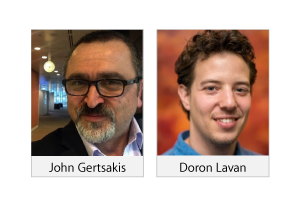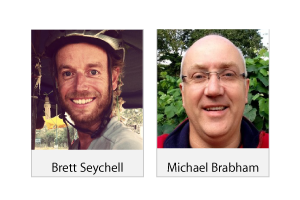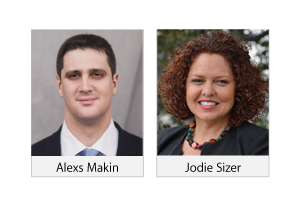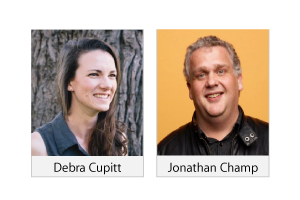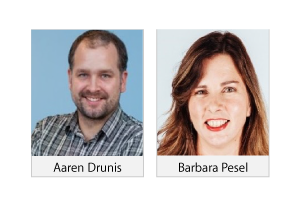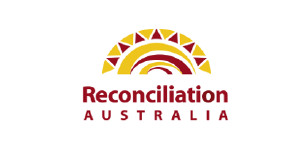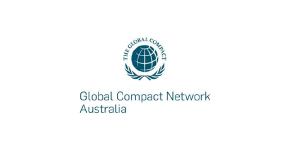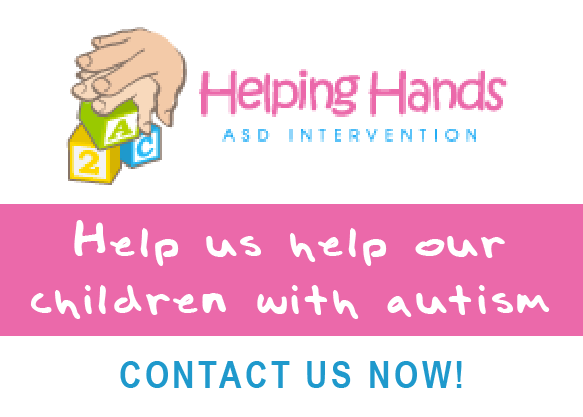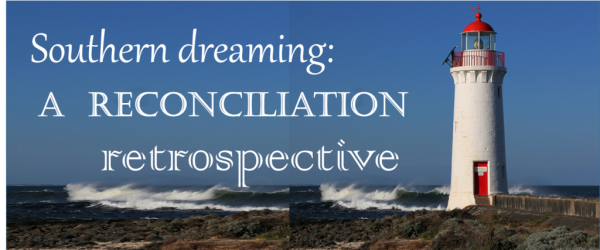
Southern dreaming: A Reconciliation retrospective
One thing you can be guaranteed of in South-West Victoria is that it will be windy. Particularly in winter. Cold, strong, howling winds coming up from Antarctica; chilling the spine, invading ear holes and making eyes water. When I think of home, I think of the wind. My South-West home, where I grew up, in Port Fairy. I imagine the Gunditjamara warriors in the wind; comforting, protecting, and reminding us of the ancient ways, the ancestors, the fight. My traditional home of Broome, in Western Australia, has an entirely different wind altogether. I’ll leave that story for another day.
In Port Fairy, you’ll feel the wind everywhere; at the East Beach, leaning on your car bonnet at The Passage, and on the hill where St Patrick’s Church sits on the Princes Highway. It’s a large building, built in the gothic revival style of the mid-1800s. Made of local basalt courtesy of the volcano at Tower Hill and named after the patron saint of Ireland, the church is evidence of the strong Irish Catholic community which settled in the town they used to call Belfast. It was completed in 1859 and mass is still celebrated there every Sunday. Funerals, first communions and weddings continue to be held at St Patricks, where grandfathers dab their eyes; where bridesmaids dash to control the bride’s veil; where children running in the car park are riled up before the service – all because of that wind.
St Patrick’s primary school in William Street is just a short walk from the church, and it was here that I first heard the word ‘reconciliation’. I was 8 years old and starting grade 4; we were preparing to ‘make our reconciliation’. I found out from my grandparents that this was another word for confession. I knew what confession was. I’d heard them talk about it before. I’d seen them go in to the confessional booth and tell the priest their sins. You were supposed to keep your sins secret though; you weren’t allowed to tell anyone what was spoken in the confessional booth. I wondered if the wind which crept in to the church from under the doors or down from the bell tower would capture people’s sins and take them up to heaven to be let free.
A lot of time was spent preparing us grade 4-ers for our reconciliation. We learned that reconciliation meant telling the priest all your sins and if you were truly sorry, you would be forgiven. Our teacher gave us examples of sins, to help our young minds dig down into our naughtiness to work out how to articulate it. Perhaps you had used a bad word? Had a fight in the playground or talked back to your mother? Lied about something? The teacher told us it was ok; as long as you are really, truly sorry, and say your prayers, you’ll go to heaven. Admission of your wrongdoings and admission of guilt, meant you would be saved.
My first reconciliation was made at St Patrick’s. The church was a safe and familiar place to me. The wooden pews were smooth to touch. The smell, even the cold, was comforting. Nervous as I was to make my first confession, I kept telling myself that as long as I was honest, everything would be ok. The priest wasn’t allowed to tell anyone your sins anyway so no-one would know what they really were.
When we left the church, the wind hit us as it did every time we walked out the arched doorway. With our brows and breasts wet from blessing ourselves with the holy water, the cold South-West wind blasted across it, reminding you that you’d done the right thing for another Sunday. At least a quarter of an hour would be spent out the front catching up with people. From an early age, I realised that church was not just about praying – it was a social outing. After my reconciliation, I was praised by my mother, other family members, the teacher and the ‘church ladies’. Now I knew how to admit my sins, I felt a bit more grown-up and responsible.
On I went, through primary school, ‘doing reconciliation’ every couple of months or so when it was scheduled at St Patrick’s. The meaning was very clear to me and I remember ‘saving’ sins when I was naughty, thinking – “I’ll have something to say at reconciliation now.” Sometimes I lied and made sins up because I couldn’t think of any. “I was mean to my brother” was a good default admission.
The meaning of reconciliation changed for me around the age of 12 or 13. I was now a high-schooler, catching the bus every day to Emmanuel College in Warrnambool. The wind was a bit different over there. It was still cold, strong and guaranteed; but it smelled different. On a good day you’d get the aroma of coffee coming from the Nestle factory. On a bad day you’d get choking, pungent wafts of dead animals from the abattoir. As reliable as the wind was, it was not as safe to me as the Port Fairy wind.
Emmanuel College originated in 1991 after an amalgamation of the Christian Brothers College and St Ann’s. I was delighted to spend year 7 in a glorious whirl of girls-only classes, excursions and sports days. When year 8 and the amalgamation came, I remember confessing to the priest that I didn’t like the boys. My romanticised view of pretty white bobby socks and sweet smelling classrooms, with flowers and lip-gloss all through to year 12 was in jeopardy. By year 9 though, I’d gotten over it, made friends with the boys and was thoroughly enjoying school.
The early 90s was the beginning of me discovering a new interpretation of reconciliation. Paul Keating made his famous Redfern Speech, Nicky Winmar showed the Collingwood cheer squad his skin, and we had the International Year of Indigenous People in 1993. Something was changing and it was my Mum who did a lot of the explaining. The TV and the radio were the places I most saw and heard my Dad at that time. He was ensconced in a world of native title legislation, the United Nations, and his new role as the first Aboriginal and Torres Strait Islander Social Justice Commissioner. Long-distance phone calls to my brother and I included planning holidays, how school was going and other family news. I accepted it all and learned to feel pride when my teachers at school would say “I heard your Dad on the radio this morning!” I knew the work he was doing was important and he helped me grow my strong identity, even from afar.
I remember seeing coverage of the Redfern Speech on the news and Mum telling us why people were emotional about it, why everyone was talking about it, and why it meant something to Aboriginal people. Around this time, the Aboriginal and Torres Strait Islander Commission (ATSIC) and the Reconciliation Council (now Reconciliation Australia) were established. After seeing replays of Keating’s speech over and over on the news, what rang in my ears were the admissions he made. “We took the traditional lands… brought the diseases… committed the murders… took the children from their mothers. “ The Prime Minister was actually saying these things. The only other Prime Minister I could remember was Bob Hawke. I never saw him on the telly saying stuff like this. It was Keating who said at Redfern, “…how would I feel if this were done to me?” Growing up a Catholic, this statement stayed with me; one of the first things I had learned at St Patrick’s was ‘do unto others as you would have them do to you’. The Prime Minister was admitting sins, wrongdoings, revealing guilt. Keating told Australia that “there is nothing to fear or to lose in the recognition of historical truth.” I knew reconciliation meant telling the truth and I wondered if the wind on The Block at Redfern would carry the country’s sins away. It was too unfamiliar a place to me, to know.
I was starting to see reconciliation as a public thing. It now had a capital ‘R’. No longer confined to church confessional booths, the media and my family were showing me that Reconciliation was something which the whole country needed, regardless of Catholicism. I saw more of my Uncle Patrick on the TV at this time too. Uncle Patrick was once a Catholic priest and he married my Mum and Dad in St Patrick’s church in Port Fairy. Once again, Mum helped explain to me that Uncle Patrick couldn’t do the work he wanted to within the church and that’s why he was working on the Reconciliation stuff.
After Emmanuel College, into university and working life, church confessions became further and further apart, and Reconciliation remained a public thing. ATSIC was dissolved, my Dad became a Co-Chair at Reconciliation Australia, the media were calling Uncle Patrick ‘the Father of Reconciliation’, and I started to hear people talk about Reconciliation as “something that makes white people feel good about themselves.” My view of what Reconciliation is and how it applied to me was evolving. Reconciliation with a priest is private, Reconciliation between Indigenous and non-Indigenous Australians is public and I was working out how to embrace it.
In 2010 I started working at Monash University. I had spent three years in the public service and looked forward to the new environment. Although Port Fairy had grown me accustomed to wind, it wasn’t until I came close to the Robert Menzies Building that I knew what Clayton was capable of. It was as if the Menzies, the Campus Centre, Law, the Gallery and the Rotunda had conspired with the wind, as a test to students. I wondered, if you can brave the wind to get inside and learn will you be ‘saved’? Was the wind this bad when the Menzies was the ‘skyscraper’ which stood out here in the middle of nowhere, or did it wait until the ‘Ming Wing’ had companions? I didn’t know; I just huddled into my coat, trying to avoid my papers being scattered everywhere as the unforgiving wind whipped me around campus.
At Monash, the word Reconciliation is around me every day. It is having a brighter light shone upon it as our first Reconciliation Action Plan comes to life, which focuses on relationships, respect and opportunities. I have embraced these words as an important part of what Reconciliation means to me, but I’m not sure if or how I could separate the word ‘reconciliation’ from words like ‘confession’, ‘truth’, and ‘forgiveness’. In church, you achieve reconciliation once the priest absolves you of your sins, you promise to pray, and take action to remedy the wrongs you have done. I do not know what our country will be like if and when we achieve Reconciliation. Reconciliation does not seem to have an end point; how do we know when we have it? I know the answer is not in the wind. It is inside us. But like the wind, if we face it head on, it may cause our eyes to water, rile us up, mess our hair, and knock things over, but sometimes that’s what needs to be done to get up the hill to St Patrick’s, out to The Block at Redfern, or into the Menzies Building. The wind has memories in it and stories to tell us. Listen to it not for answers, but to find within yourself your reconciliation.
Featured photo by Flora Haggis

